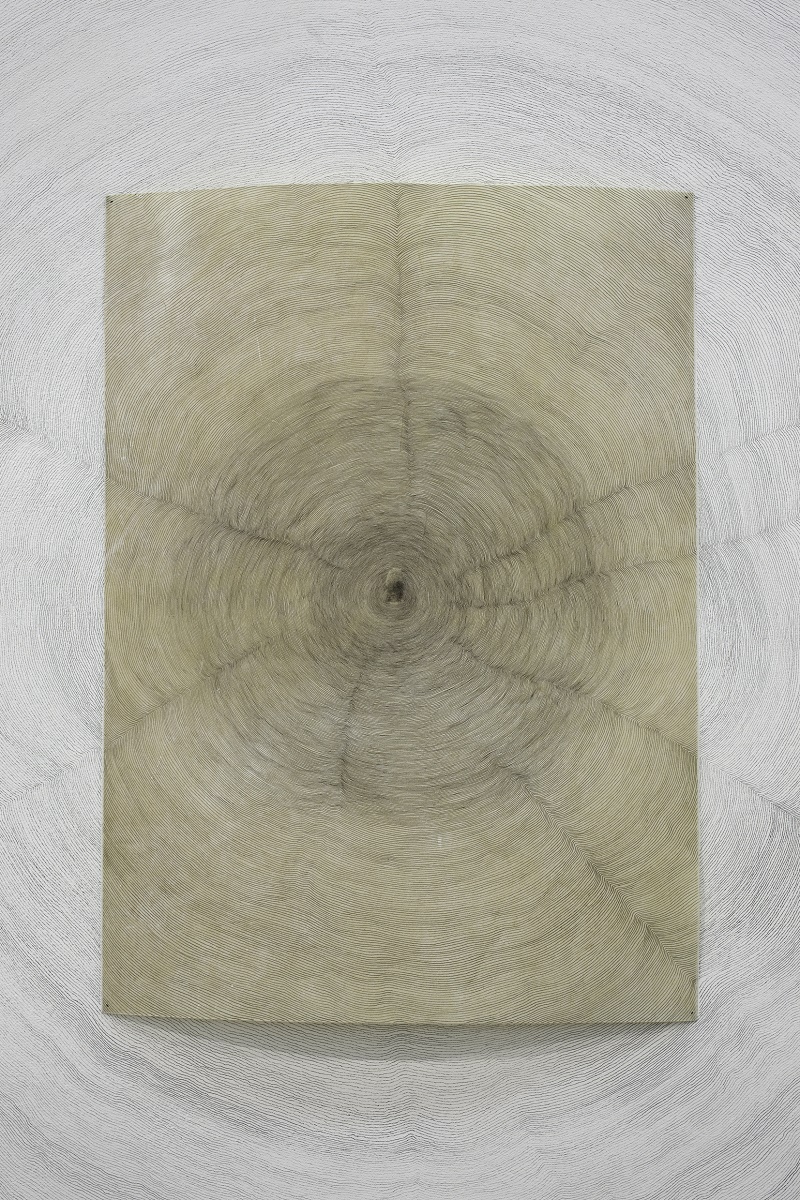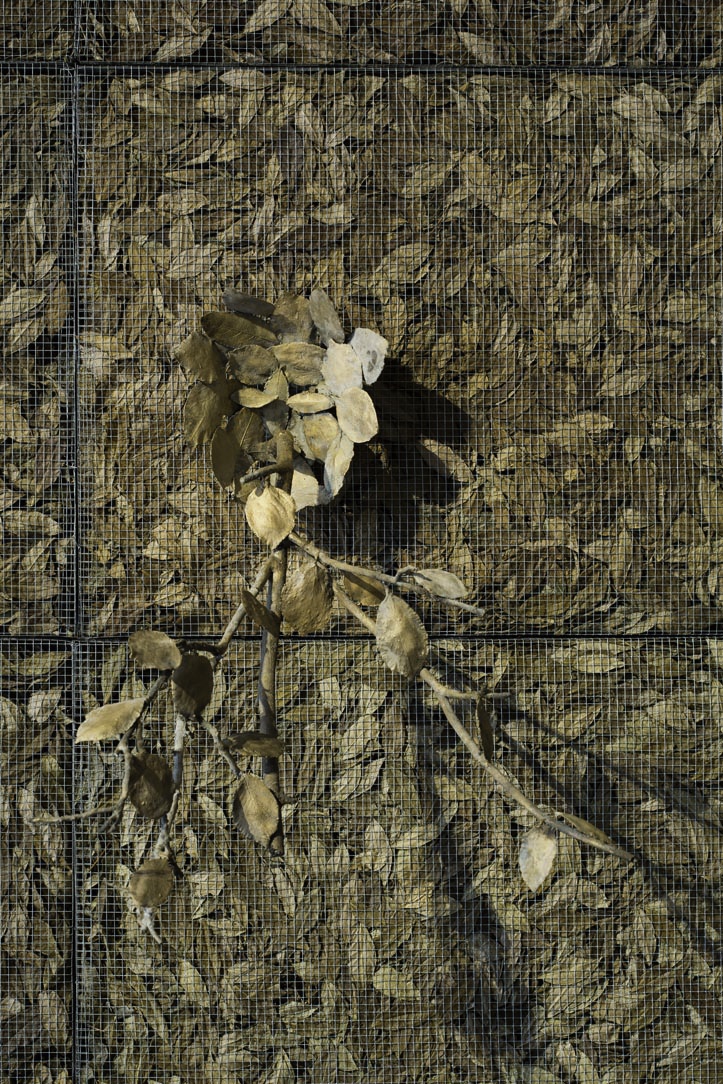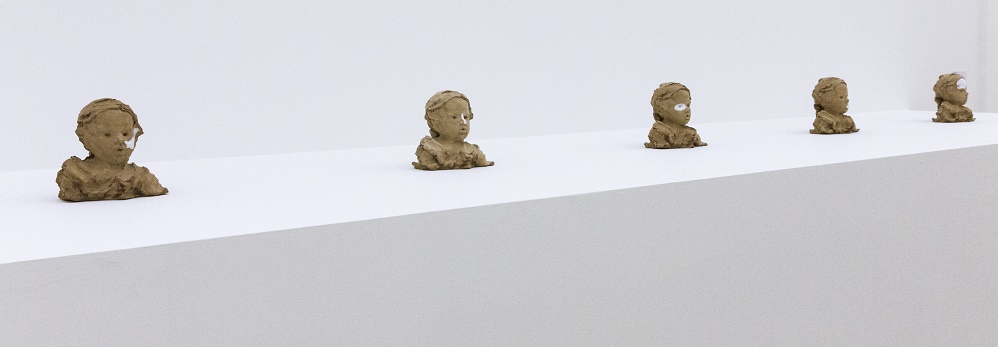Guiseppe Penone’s lyrical and tactile works, made from the simple elemental materials that typify the 1960s Italian Arte Povera movement (of which he is a key exponent), belong largely to the outside world of woods and gardens. But they also find an ideal setting in the serene light-filled spaces of Marian Goodman Gallery, where Penone’s perennial fascination with the relationship between man, nature and art is fruitfully explored in an exhibition entitled Fui, Sarò, Non Sono (I was, I will be, I am not).
This is one of two complementary Goodman shows, staged simultaneously in London and Paris, devoted to different aspects of Penone’s work. The London exhibition is a classical meditation on the passage of time, on human existence, and the intense power of human touch, which makes both our "presence" and our present visible.
 Trees, leaves, twigs, thorns – bronze, marble, terracotta and parchment – all these furnish Penone with his exquisite natural palette, together with the forms and materials with which he explores his own relationship with the living ecosystem. One fingerprint contains within its whorls a pattern that shapes the whole universe, stretching out through time and space. This idea is embodied in a work entitled Propagazione, 2011 (pictured right © Cathy Carver), which, beginning with a thumbprint at its centre, extends through the model of radiating rings that you see in a tree (when you cut a section in the wood) and, which, as Penone notes, is also present in the ripples of sound and water. The small thumbprint makes its mark, rich and concentrated at the centre, and yet at the same time scarcely makes a dent in the grand scheme of things.
Trees, leaves, twigs, thorns – bronze, marble, terracotta and parchment – all these furnish Penone with his exquisite natural palette, together with the forms and materials with which he explores his own relationship with the living ecosystem. One fingerprint contains within its whorls a pattern that shapes the whole universe, stretching out through time and space. This idea is embodied in a work entitled Propagazione, 2011 (pictured right © Cathy Carver), which, beginning with a thumbprint at its centre, extends through the model of radiating rings that you see in a tree (when you cut a section in the wood) and, which, as Penone notes, is also present in the ripples of sound and water. The small thumbprint makes its mark, rich and concentrated at the centre, and yet at the same time scarcely makes a dent in the grand scheme of things.
A "landscape" of sharp acacia thorns, 2005, creates a partial portrait or self-portrait, where we see the soft and creased forms of a mouth emerge from the painful spikes. The thorns create grooves, lines and texture when seen from a distance but, up close, the spikes suggest the individual sensitivity of nerve endings.
The hand as the ultimate mark of human presence is graphically explored in an installation – Trattenere 6, 8, 12 anni di crescita. This, the most recent of Penone’s works, has been created over a period of 12 years (2004-2016). The work’s history is intimately entwined with Penone’s own life as an artist: in 1968, in a forest near Garessio in Piedmont, Penone announced his presence to the art world by casting his own hand in bronze, and binding it to the trunk of a sapling tree. Six years later, he cast the tree where it stood with the bronze hand intact, repeating the process at eight years and then again at 12. Brought together as a trio, the three "stages" create a harmonic progression (echoed in the slightly different patina of each) in which nature and the metallic hand have become increasingly inseparable. We are watching an evolutionary process, in which the "human" is gradually absorbed, while the tree slowly morphs and adapts.
 Many other works continue the arboreal theme, so central to Penone’s practice since his Garessio immersion. One wall is covered with a panelled installation of 2008, consisting of cages of laurel leaves – evoking variegated coloured marble, but also a forest floor – scenting the room as they brown and decay (pictured left: Respirare l'ombra © Tadzio). A branch attached to their "surface" sports a golden sprig of laurel leaves in its prime. Bent structures, made up of interwoven bronze branches and containing terracotta casts featuring the mark of his hand, create a further forest of forms. Here the fingers mark their passage, captured as they squeeze and twist the clay.
Many other works continue the arboreal theme, so central to Penone’s practice since his Garessio immersion. One wall is covered with a panelled installation of 2008, consisting of cages of laurel leaves – evoking variegated coloured marble, but also a forest floor – scenting the room as they brown and decay (pictured left: Respirare l'ombra © Tadzio). A branch attached to their "surface" sports a golden sprig of laurel leaves in its prime. Bent structures, made up of interwoven bronze branches and containing terracotta casts featuring the mark of his hand, create a further forest of forms. Here the fingers mark their passage, captured as they squeeze and twist the clay.
The earliest works in the lower gallery – a series of five touching terracotta busts of his daughter Caterina, dating from 1986 – are literally touching as well (pictured below © Archivio Penone). The terracotta, sculpted in a spontaneous impressionistic style with deep grooves made by the artist’s fingers (with mere finger-holes for eyes and mouth), creates a vivid and tender likeness. But then the head is transformed with the addition of enamelled patches of white. These denote areas where her face has been caressed – the artist’s finger gently traversing her forehead, cheek, eye, nose and mouth.
 Life is also traced in the forms of Carrara marble – the marmoreal as well as the arboreal have become a preoccupation of Penone’s over the last 12 years. The marble, with its surface colour exposed at the top edge, becomes a bas-relief of writhing white veins – like those of a human hand – or rivulets of mountain streams, sculpted and brought to the fore.
Life is also traced in the forms of Carrara marble – the marmoreal as well as the arboreal have become a preoccupation of Penone’s over the last 12 years. The marble, with its surface colour exposed at the top edge, becomes a bas-relief of writhing white veins – like those of a human hand – or rivulets of mountain streams, sculpted and brought to the fore.
On the upper floor of the gallery, forests of white marble and bronze stumps grow from marble blocks. A horizontal branch, smothered in small discs of pressed black wax, looks like a charred remain, while a harp-like structure (cast from the internal forked space of a tree and, evoking the legend of Daphne), provides motion and a curved counterpoint. Another marble tree, with bronze sections, exposes its hand-sculpted writhing roots, which emphasise the crystalline translucency of the "living" marble material.
In the booklet that accompanies the show, Penone writes:
I entrust to the work the present of my existence
I entrust to the work the past of my existence
I entrust to the work the future of my existence.
There is a profound continuity to Penone’s work, and an enduring relevance to his preoccupations, which ensures that this trust is not misplaced.
- Giuseppe Penone: Fui, Sarò, Non Sono (I was, I will be, I am not) at the Marion Goodman Gallery 5-8 Lower John Street, London W1F 9DY until 22 October
- Read more visual art reviews on theartsdesk










![SEX MONEY RACE RELIGION [2016] by Gilbert and George. Installation shot of Gilbert & George 21ST CENTURY PICTURES Hayward Gallery](/sites/default/files/styles/thumbnail_125_x_125_/public/mastimages/Gilbert%20%26%20George_%2021ST%20CENTURY%20PICTURES.%20SEX%20MONEY%20RACE%20RELIGION%20%5B2016%5D.%20Photo_%20Mark%20Blower.%20Courtesy%20of%20the%20Gilbert%20%26%20George%20and%20the%20Hayward%20Gallery._0.jpg?itok=3oW-Y84i)




Add comment